A little known secret…There are very few residential beachside communities in all of West Maui. It’s true.
You say what?
Well first off, when I speak of beachside community…I’m not talking about high density condo on the beach community, or the 1-acre mansion on the beach community, and I’m definitely not talking about the high-on-the-hillside-and-gotta-golf-cart-down-to-the-beach community. These are all great communities in their own right; however, for the purposes of this article:
8,400+ sq foot lot, expansive property development and major upgrades (main house left, cottage straight)
Residential Beachside Community Means
1. Beach – The neighborhood must be in very close proximity to a lengthy stretch of sand. Not just the ocean’s edge, seawall, or rocks. And not just a sliver of sand. At least a 1/4 mile or more; a place you can walk, run, sit, lounge, play, and enjoy.
2. Proximity – I mentioned it above. By close, I mean right there. 1-2 streets – and BAM – beach!
3. No highway separating neighborhood and beach – The difference between living mauka or makai of the highway. No Honoapiilani Hwy, no PCH, no A1A. The highway must run behind the neighborhood.
4. No thru traffic – There is 1 access point in and out to the entire neighborhood. 1 road in, 1 road out.
5. The entire neighborhood must be flat – This is very important for walking, biking, pulling wagons, strollers, coolers, and other family beach town activities.
6. Residential regular – no hotels, timeshares, or mega mansions. Less than 10,000 sq fot lots, zoned R-2.
7. County Sewer and Water
8. No HOA or HOA fees
9. Speed limit signs – 20 mph or less
10. Avg Sales Price: under $1M
Yeah, that close; beach access is just around the corner
Beach Lover’s Paradise
Like I said, there are very few residential beachside communities in West Maui…However, there is a property at 420 Alio St (MLS# 369090) that meets every requirement above and then some. A place that allows you to walk, bike, stroll, or roll by wagon anywhere you want. A place that has the conveniences of Front St, Lahaina Harbor, and downtown, but also has its own protective seclusion cut off from high traffic or thru access. A place where you meet the neighbors, and not just the ones next door…you meet people as you stroll/roll about enjoying the surroundings the neighborhood has to offer.
Check out the must-see property video and find your Lahaina Life!
This permitted main house and detached custom cottage has pride of ownership and vision throughout. A true beach compound lover’s paradise with expansive property development, upgrades, and attention to detail. Each dwelling is independent of each other right down to the parking.
The Lot: 8,428 sq ft
The Main House: 3 BR/2 BA 1,050 sq ft (Built 1972)
The Ohana: 1 BR/1 BA, 496 sq ft (Built 2008)
The Sales History: Last 4 sales dating back last 2 years: Avg price $723K, none had a permitted cottage
The List Price: $950K
Cottage entrance: includes gated entry and 220 sq ft covered carport. Main house to right.
Interested?
If you are interested in this property, have any questions, or would like to set up a private showing, please feel free to contact me. Thanks for reading!
Main House Living Room
Open space, granite, coconut wood floors. Custom designed 1940’s style cottage.
Main House Front Exterior
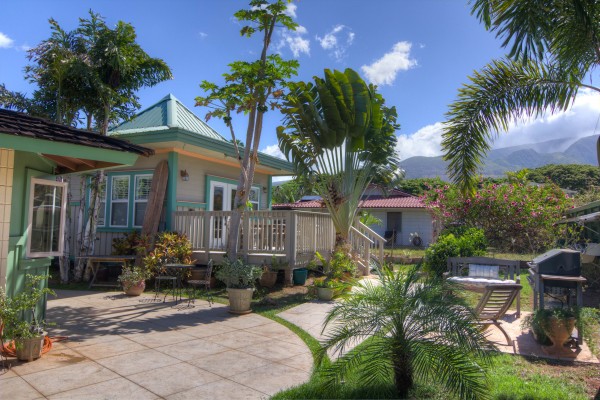
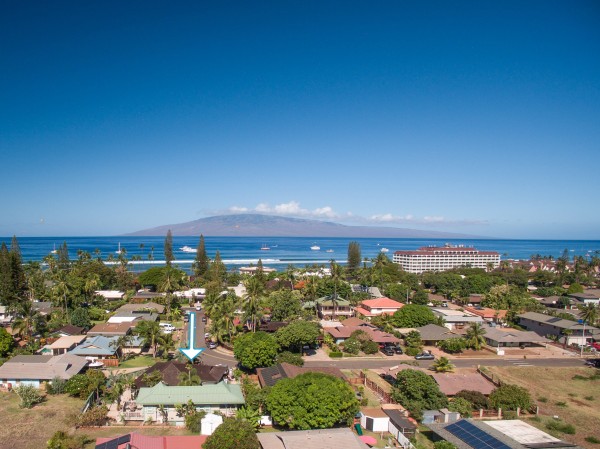
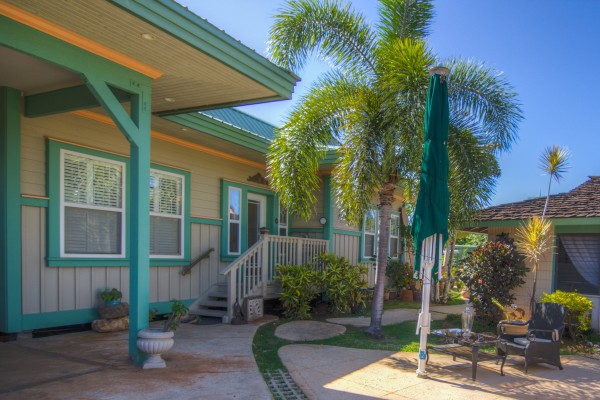
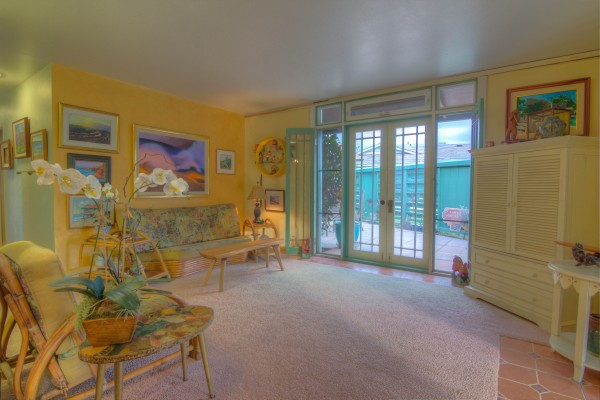
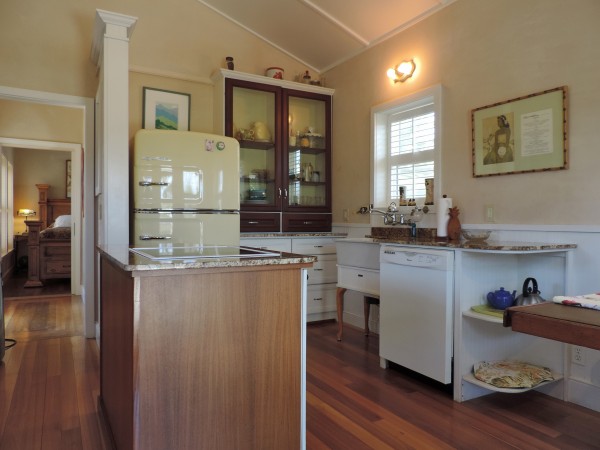
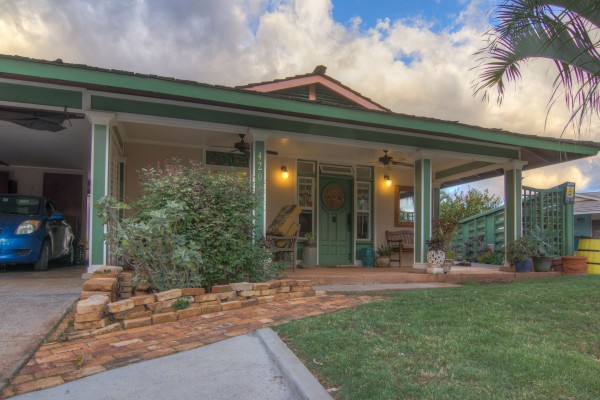

Judi Allen
August 12, 2016
Beautifully put together (both the property and your video). What happens when there is unpermitted construction on a property? Are there fines that might pass to new owners or ??
Judi
Jeff Onderko R(S)
August 16, 2016
Hi Judi: Thanks so much for your read, and your compliments. I very much appreciate. You propose a fantastic question and one that specifically has many different questions, considerations, and working parts to consider. The range of situations & extremes is quite vast.
Examples: Is it a simple fix or administrative issue? Is the non-permitted building a public nuisance, is it a safety hazard? Has it been grandfathered in ? Is their public outcry, is there non conforming use and no permits? Are there HOA restrictions, how severe is the infraction, why is the property not permitted?” All things to consider.
To fully understand in detail, a visit to the county is the best action. It may take a few visits 🙂
However, for the sake of discussion relevant to your question and examples that could result out of a un-permitted property (during, after transaction).
1) Fines for unpermitted structure: typically these are based on value of the subject property,
What else could happen?
2) An un-permitted structure could create a scenario where a new Buyer after taking ownership, could be fined or see his structure forced to be removed. In some cases depending on the situation, the Buyer could be granted the opportunity to obtain the permit based on conditions. But if the Buyer fails to do so, the structure could be forced to be removed. This would be the extreme action.
3) In an open permit transaction, where work is left unfinished and a final permit not filed with the county, a new buyer could hold the liability of finishing open permit items after purchase. Or face what is explained above. This is why it is very important to check the County and all sources available during the due diligence period of a purchase. If a no-permit situation exists….It is best to get/request the Seller to finalize with the County prior to closing day.
4) BUT the biggest question in all of this is “What was the Seller’s Disclosure on the Disclosure Statement on questions relevant to building, improvements and permits?” It could get much stickier if during a transaction the Selling party does not disclose the no/open permit situation when thy had a chance, or they mislead a buying party saying or falsely documenting a structure is permitted when in fact they know it is not. There could be cause for Buyer recourse.
I hope this give you a little more insight.
Thank you.
Judi Allen
August 12, 2016
Beautifully put together (both the property and your video). What happens when there is unpermitted construction on a property? Are there fines that might pass to new owners or ??
Judi
Jeff Onderko R(S)
August 16, 2016
Hi Judi: Thanks so much for your read, and your compliments. I very much appreciate. You propose a fantastic question and one that specifically has many different questions, considerations, and working parts to consider. The range of situations & extremes is quite vast.
Examples: Is it a simple fix or administrative issue? Is the non-permitted building a public nuisance, is it a safety hazard? Has it been grandfathered in ? Is their public outcry, is there non conforming use and no permits? Are there HOA restrictions, how severe is the infraction, why is the property not permitted?” All things to consider.
To fully understand in detail, a visit to the county is the best action. It may take a few visits 🙂
However, for the sake of discussion relevant to your question and examples that could result out of a un-permitted property (during, after transaction).
1) Fines for unpermitted structure: typically these are based on value of the subject property,
What else could happen?
2) An un-permitted structure could create a scenario where a new Buyer after taking ownership, could be fined or see his structure forced to be removed. In some cases depending on the situation, the Buyer could be granted the opportunity to obtain the permit based on conditions. But if the Buyer fails to do so, the structure could be forced to be removed. This would be the extreme action.
3) In an open permit transaction, where work is left unfinished and a final permit not filed with the county, a new buyer could hold the liability of finishing open permit items after purchase. Or face what is explained above. This is why it is very important to check the County and all sources available during the due diligence period of a purchase. If a no-permit situation exists….It is best to get/request the Seller to finalize with the County prior to closing day.
4) BUT the biggest question in all of this is “What was the Seller’s Disclosure on the Disclosure Statement on questions relevant to building, improvements and permits?” It could get much stickier if during a transaction the Selling party does not disclose the no/open permit situation when thy had a chance, or they mislead a buying party saying or falsely documenting a structure is permitted when in fact they know it is not. There could be cause for Buyer recourse.
I hope this give you a little more insight.
Thank you.
Kelley
August 14, 2016
Absolutely beautiful property! I’m sure this will get snatched up quickly!
Jeff Onderko R(S)
August 16, 2016
Hi Kelly: Thank you for your response. It really is a tremendous property, very unique…A Lahaina “soul pad” if you will. FYI – we are holding open houses Mon & Wed mornings from 9:30-12:30pm if you’d like to preview.
Kelley
August 14, 2016
Absolutely beautiful property! I’m sure this will get snatched up quickly!
Jeff Onderko R(S)
August 16, 2016
Hi Kelly: Thank you for your response. It really is a tremendous property, very unique…A Lahaina “soul pad” if you will. FYI – we are holding open houses Mon & Wed mornings from 9:30-12:30pm if you’d like to preview.